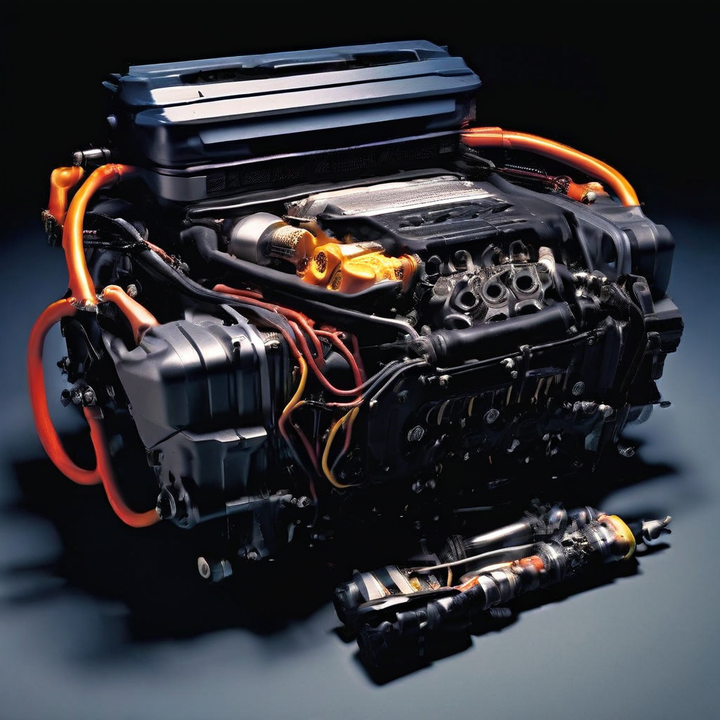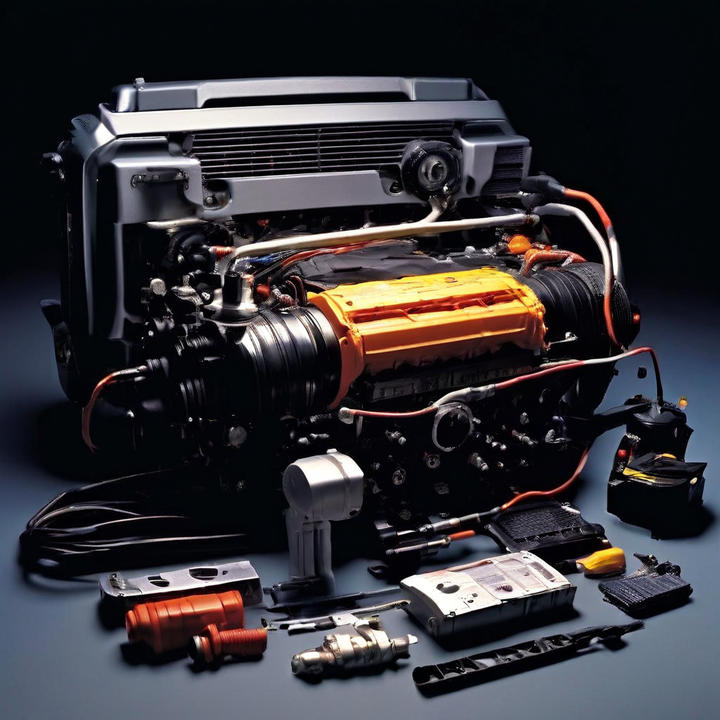


The P030E code is part of the OBD-II diagnostic trouble codes related to the ignition system. Specifically, it indicates a low signal in the Ignition B Control Circuit, which can affect engine performance and efficiency.
Faulty ignition coil
Damaged or corroded wiring and connectors
Malfunctioning Engine Control Module (ECM)
Poor electrical connections
A damaged ignition coil can lead to weak or no spark, causing the engine to misfire.
Corroded wiring can interrupt the electrical signal, leading to a low circuit signal.
A malfunctioning ECM may fail to properly control the ignition system, resulting in diagnostic trouble codes.
| Cause | Description |
|---|---|
| Faulty Ignition Coil | Leads to weak or no spark, causing engine misfire |
| Damaged/Corroded Wiring | Interrupts electrical signal, leading to low circuit signal |
| Malfunctioning ECM | Fails to control ignition system properly, resulting in trouble codes |
| Poor Electrical Connections | Causes intermittent or weak signals affecting ignition performance |
Ignition Coil Replacement: Replace the faulty ignition coil with a new one.
Wiring Repair: Inspect and repair or replace damaged wiring and connectors.
ECM Replacement: If the ECM is faulty, it may need to be reprogrammed or replaced.
Regular Inspections: Periodically check the ignition system components for wear and damage.
Cleaning: Keep connectors and wiring clean and free from corrosion.
Software Updates: Ensure the ECM software is up-to-date to prevent malfunctions.
Diagnose the Issue: Use an OBD-II scanner to confirm the P030E code.
Inspect the Ignition Coil: Check for visible damage or wear.
Test the Wiring: Use a multimeter to check for continuity and proper voltage.
Replace Faulty Components: Replace any damaged ignition coils, wiring, or the ECM as needed.
Clear the Code: After repairs, clear the code using the OBD-II scanner and test drive the vehicle to ensure the issue is resolved.
| Step | Action |
|---|---|
| 1. Diagnose the Issue | Use an OBD-II scanner to confirm the P030E code |
| 2. Inspect the Ignition Coil | Check for visible damage or wear |
| 3. Test the Wiring | Use a multimeter to check for continuity and proper voltage |
| 4. Replace Faulty Components | Replace any damaged ignition coils, wiring, or the ECM as needed |
| 5. Clear the Code | Clear the code using the OBD-II scanner and test drive the vehicle |
Regular Maintenance: Schedule regular maintenance checks for the ignition system.
Quality Parts: Use high-quality replacement parts to ensure longevity and reliability.
Environmental Protection: Protect the vehicle from harsh environmental conditions that can cause corrosion.
Routine Checks: Regularly inspect the ignition coils and wiring for signs of wear or damage.
Protective Coatings: Apply protective coatings to electrical connectors to prevent corrosion.
Proper Storage: Store the vehicle in a garage or covered area to protect it from the elements.
| Preventive Measure | Best Practice Example |
|---|---|
| Regular Maintenance | Schedule regular maintenance checks for the ignition system |
| Quality Parts | Use high-quality replacement parts to ensure longevity and reliability |
| Environmental Protection | Protect the vehicle from harsh environmental conditions that cause corrosion |
Diagnosing the Exact Cause: Multiple potential causes can make it challenging to pinpoint the exact issue.
Access to Components: Some ignition system components may be difficult to access, requiring specialized tools or expertise.
Cost of Repairs: Replacing the ECM or multiple ignition coils can be expensive.
Vehicle Make and Model: Different vehicles may have unique ignition system configurations.
Severity of the Issue: The extent of the damage can affect the complexity and cost of repairs.
Availability of Parts: Ensure that replacement parts are readily available and compatible with the vehicle.
DIY Repairs: Some may argue that DIY repairs can save money, but they require a certain level of expertise and proper tools.
Ignoring the Issue: Ignoring the P030E code can lead to more severe engine damage and higher repair costs in the long run.
| Challenge/Consideration | Description |
|---|---|
| Diagnosing the Exact Cause | Multiple potential causes can make it challenging to pinpoint the exact issue |
| Access to Components | Some ignition system components may be difficult to access |
| Cost of Repairs | Replacing the ECM or multiple ignition coils can be expensive |
| Vehicle Make and Model | Different vehicles may have unique ignition system configurations |
| Severity of the Issue | The extent of the damage can affect the complexity and cost of repairs |
| Availability of Parts | Ensure that replacement parts are readily available and compatible |

Understanding the P030E code, its causes, and the necessary repair and maintenance techniques is essential for maintaining vehicle performance and preventing costly repairs.
Regular maintenance and preventive measures can help avoid the P030E code and ensure the longevity of the vehicle's ignition system.
Don't let a small issue turn into a major problem. Stay proactive with your vehicle's maintenance and address any diagnostic trouble codes promptly to keep your car running smoothly.
The most common symptoms of the P030E code include engine misfiring, rough idling, and reduced engine performance. The check engine light will also be illuminated.
While it is possible to drive with the P030E code, it is not recommended as it can lead to further damage to the ignition system and other components. It is best to address the issue as soon as possible.
To diagnose the P030E code, you should start by using an OBD-II scanner to confirm the code and check for any other related codes. Then, inspect the ignition coil, wiring, and connectors for any signs of damage or corrosion.
Yes, a malfunctioning Engine Control Module (ECM) can cause the P030E code if it fails to properly control the ignition system.
Repairing the P030E code may involve replacing the faulty ignition coil, repairing or replacing damaged wiring and connectors, or replacing the ECM if it is malfunctioning.
Preventive measures for the P030E code include regular maintenance checks, using high-quality replacement parts, and protecting the vehicle from harsh environmental conditions that can cause corrosion.
Yes, poor electrical connections can cause intermittent or weak signals affecting the ignition system, leading to the P030E code.
The cost of repairing the P030E code can vary depending on the specific cause and the parts that need to be replaced. Replacing an ignition coil is typically less expensive than replacing the ECM.
Yes, you can clear the P030E code using an OBD-II scanner after completing the necessary repairs. However, it is important to address the underlying issue to prevent the code from reappearing.
Ignoring the P030E code can lead to further damage to the ignition system and other engine components, potentially resulting in more costly repairs in the long run.

Miguel started tinkering with car radios as a teenager, fascinated by the intricate dance of wires and circuits. This passion led him to pursue a career as an automotive electrician. For the past 10 years, Miguel has tackled everything from flickering headlights to mysterious electrical gremlins. He thrives on troubleshooting electrical problems and enjoys sharing his knowledge to empower car owners to understand their vehicles better.



